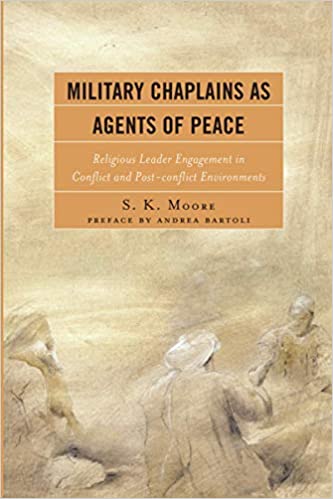It is a sad fact of history that the history of religion and the history of war are often enmeshed. Religion, which is supposed to bring out humanity’s best and invite us into line with God’s dream for the world, can sadly (and all too often) be used to cultivate violence. Such violence may be espoused to be in the name of God, tragically sometimes on both sides, but hardly reflects what is God’s character or will, nor reflects the peaceful aspirations of the majority of religious followers and leaders.
Australia has a majority Christian background but every census shows we are emerging into a more multi-cultural, multi-faith and increasingly secular society. For Aussies, the role of religion is often relegated to private and domestic spheres. In other countries, such as Middle eastern Muslim-majority countries or Christian majority countries in the Pacific, religion plays a larger role – both in the lives of local citizens and the in public/political life of the country.
These are among the reasons why awareness of the religious landscape and beliefs, and the extent of the influence of religion on conflict, are a critical part of the human terrain where the ADF operates.
The primary role of chaplains is religious and pastoral care of our troops, but they also often bring capability to understand the religious and broader community context where our troops serve and how to best foster peace and stability. For example, Chaplain John Saunders reflected on the experience of Australian chaplains in Religious Leader Engagement (RLE) and his own dialogue with Muslim leaders in Afghanistan in “Deployed Chaplains as Force Multipliers Through Religious Engagement”. CHAP Saunders referred appreciatively to the work of S K Moore, who was a Canadian Forces chaplain for 22 years with tours in Bosnia (1993) and Haiti (1997) and research with the Kandahar Provincial Reconstruction Team in Afghanistan (2006).
The first key strength of Military Chaplains as Agents of Peace is how Moore offers frameworks and theories for understanding and evaluating the need and potency of RLE. Alongside Religious Area Analysis (RAA), Moore suggests RLE is a valuable capability that chaplains offer Command, especially as part of stability operations and where force alone cannot resolve asymmetric and intractable conflict. When distrust and distortion is fuelling violent reciprocity, often along religious fault lines such as in Northern Ireland, Bosnia, India, Israel-Palestine or Myanmar, there are obvious needs to bridge differences. Dialogue, hospitality, shared ritual and collaboration in service projects can help foster openness and blessing to the other. Chaplains can help catalyse and host such activities, beginning with identifying the ‘tolerant religious voice’ of potential peacemaking partners and fostering inter-religious solidarity against any hijacking of religion in extremist violent directions. This all needs to be underlined by cultural competency that understands how conflict and peacemaking differs across cultures including different approaches to identity and relational systems.
Moore asserts RLE also needs to be differentiated from intelligence-gathering, PSYOPS or other instrumentalist military mission agendas, which would risk chaplains going outside their lane as non-combatants. It is also not necessary for a chaplain to become a mediator, although they may facilitate and invite in experts in mediation. What is clearly appropriate is that RLE has implications and potential for furthering positive Civilian-Military Cooperation (CIMIC) and humanitarian capacity-building.
The second and even more significant strength of Moore’s research is the seven case studies of chaplains exercising RLE. We read of chaplains from Canada, France, USA, New Zealand, Norway and Bosnia-Herzegovina. Their operational contexts span peacekeeping in Kosovo, wider peacekeeping in Bosnia, counterinsurgency in Iraq and reconstruction and stabilisation in Afghanistan and Bosnia-Herzegovina over the period 1994-2010. I was inspired by the catalysing of cooperation that came from an interfaith ritual event involving three faith groups in Bosnia; the potency of simple working bees in the service of the other; the transforming grace emerging from meals and conversations among religious, political and coalition military leaders; the effect of a commander worshipping locally; the focus of a New Zealand chaplain in supporting reconstruction through engaging the Bamyan Province Director of Education; and the way Bosnia-Herzegovina Defense Force Chaplaincy now models and guards ethno-religious tolerance. The book is thus never limited to theory, nor to the experience of one chaplain or military force, but neither is it merely a narration of experience without reference to critical theories and review of what worked and what might work better.
Moore concedes the place of religions in conflict is only likely to increase in extent and complexity through the 21st Century. Unfortunately, we have not likely seen the last of dehumanisation, ethnic cleansing, and religiously motivated terrorism. Hopefully we will also see religious leaders more effectively raising their voices and advocating for more peaceful application of religions. Chaplains engaged in RLE are well placed to catalyse and cooperate with this dynamic as agents of peace.
Although not treated in this book, RLE has a place also in domestic operations. During Operation Bushfire Assist (2020-21) a number of ADF chaplains engaged and supported local church, charity and council leaders to identify local needs and coordinate best support effects.
Military Chaplains as Agents of Peace is essential reading for chaplains preparing for operations and highly recommended for commanders, strategists and educators considering how to best develop and utilise RLE capability. It is also a valuable resource for theologians and religious scholars interested in studies of conflict and peace-making.
Notes:
The views expressed in this article are those of the author and do not necessarily reflect the position of the Australian Army, the Department of Defence or the Australian Government.
About the Author: Darren Cronshaw is a Chaplain in the Part-Time Army serving at Army School of Transport, Puckapunyal. For civilian work he pastors Auburn Baptist Church and teaches leadership and research methods with Australian College of Ministries (Sydney College of Divinity). He also serves as honorary chaplain at Swinburne University where he has been involved in hosting Finding Common Ground inter-belief dialogue.

